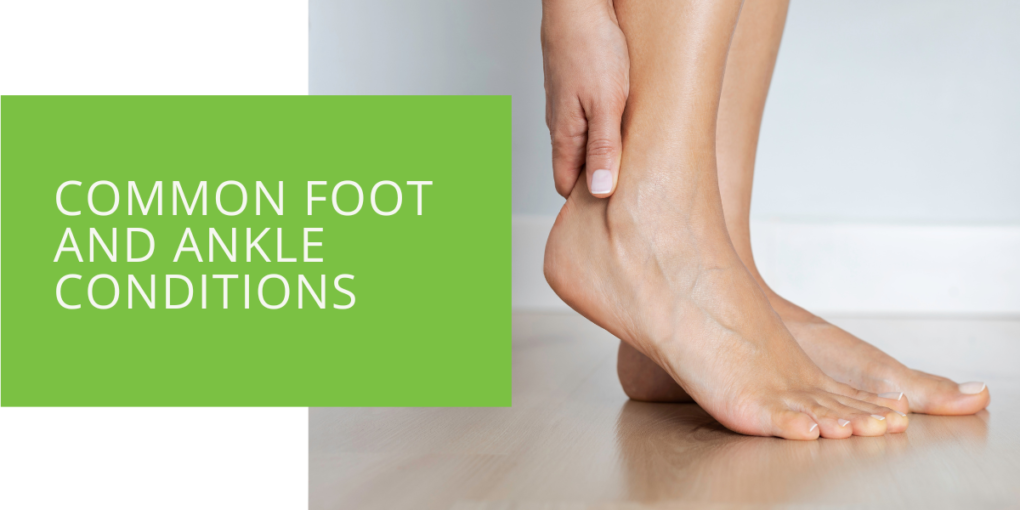Common Foot and Ankle Conditions and How to Treat Them
Good foot and ankle health is crucial for a person's overall well-being and quality of life. Foot and ankle conditions can range from minor problems like a fungal toenail infection to more serious issues like a broken bone or severe athlete's foot. A podiatrist is a medical professional who specializes in the diagnosis and treatment of foot and ankle conditions. This article will explore common foot and ankle conditions, their causes, and treatment options.
Achilles Tendinitis
Achilles tendinitis is a condition that occurs when the Achilles tendon, which connects the heel bone to the calf muscle, becomes inflamed. This can cause pain and stiffness in the back of the ankle and lower leg.
Achilles tendinitis is often caused by overuse or repetitive strain on the tendon. This can occur in people who engage in activities that involve running or jumping, such as athletes or dancers. Wearing shoes that do not provide adequate support can also contribute to the development of Achilles tendinitis.
Treatment for Achilles tendinitis typically involves resting the affected foot and ankle, applying ice to reduce swelling, and taking over-the-counter pain medication. Physical therapy may also be recommended to help stretch and strengthen the tendon. To prevent Achilles tendinitis, it is important to wear supportive shoes and gradually increase the intensity and duration of physical activity.
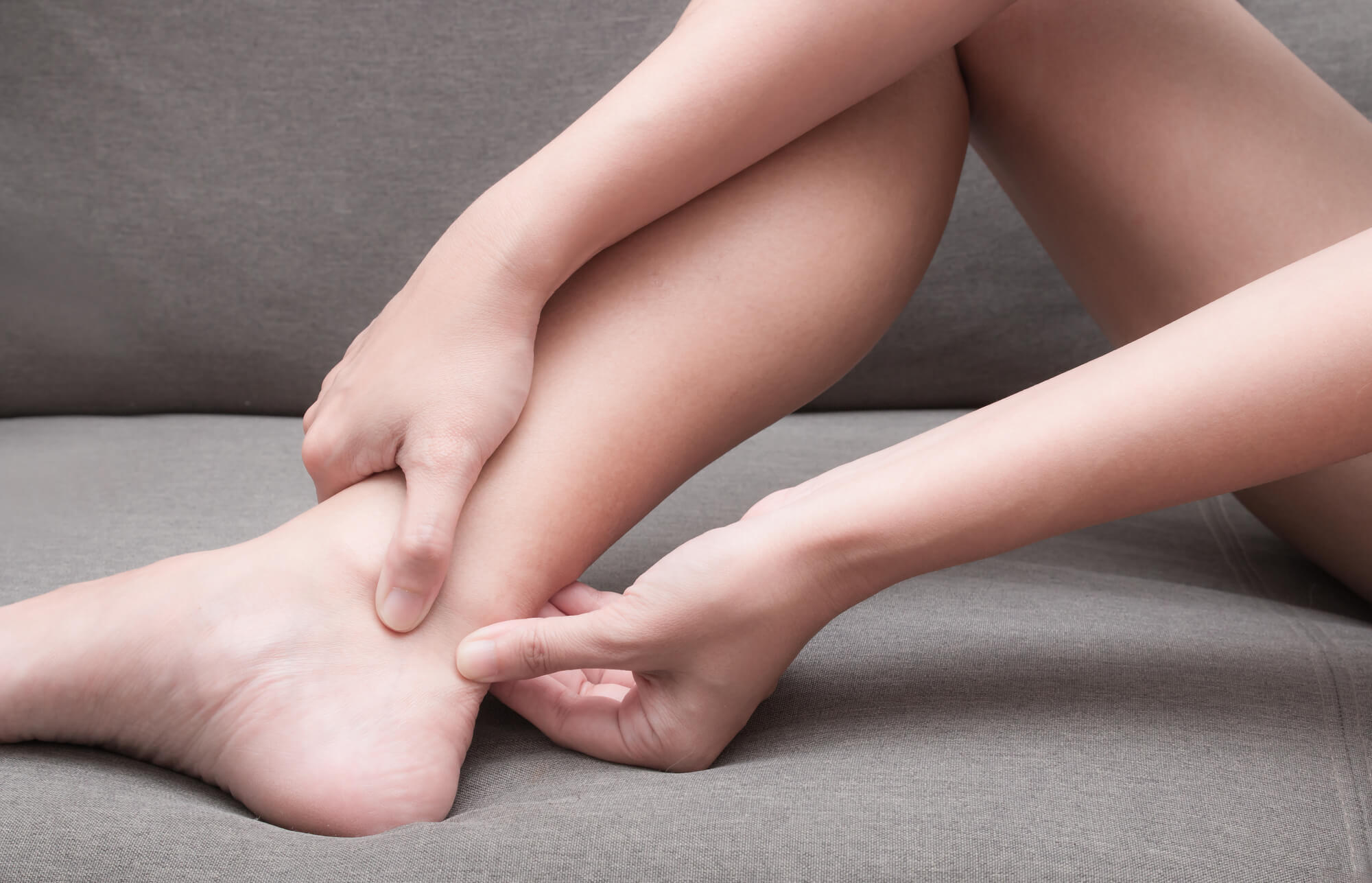
Achilles Tendon Rupture
An Achilles tendon rupture is a tear or complete break in the Achilles tendon. This can cause severe pain and make it difficult or impossible to walk.
Achilles tendon ruptures are often caused by a traumatic injury, such as falling or being hit by an object. They can also be caused by overuse or degeneration of the tendon due to age. People who engage in high-impact activities or previously had Achilles tendinitis are at a higher risk of suffering an Achilles tendon rupture.
Treatment for an Achilles tendon rupture typically involves surgery to repair the torn tendon. Physical therapy may also help restore strength and mobility to the foot and ankle. To prevent an Achilles tendon rupture, it is important to wear supportive shoes and to avoid overloading the tendon with excessive physical activity.
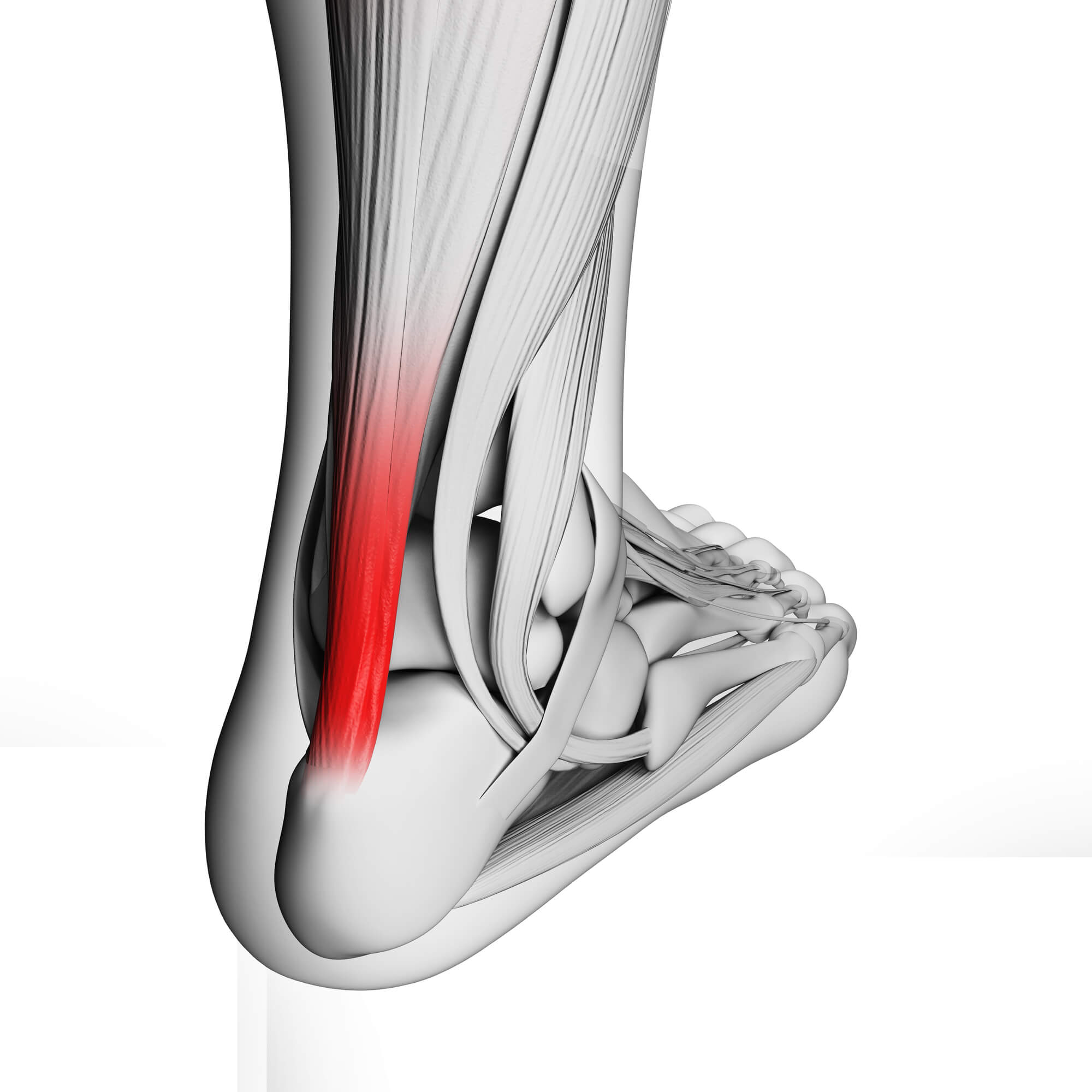
Ankle Sprains
An ankle sprain is an injury to one or more of the ligaments in the ankle. Ligaments are bands of tissue that connect bones. Ankle sprains are commonly caused by awkwardly rolling or twisting the ankle, such as when playing sports or walking on uneven ground.
Symptoms of an ankle sprain include pain, swelling, bruising, and difficulty bearing weight on the affected foot. Treatment for an ankle sprain typically involves rest, ice, compression, and elevation (the RICE method). Over-the-counter pain medication may also be taken to help reduce pain and inflammation. Physical therapy may be recommended to help strengthen the muscles and ligaments in the ankle. To prevent ankle sprains, it is important to wear shoes that provide proper support and to be mindful of one's surroundings when walking or participating in physical activity.
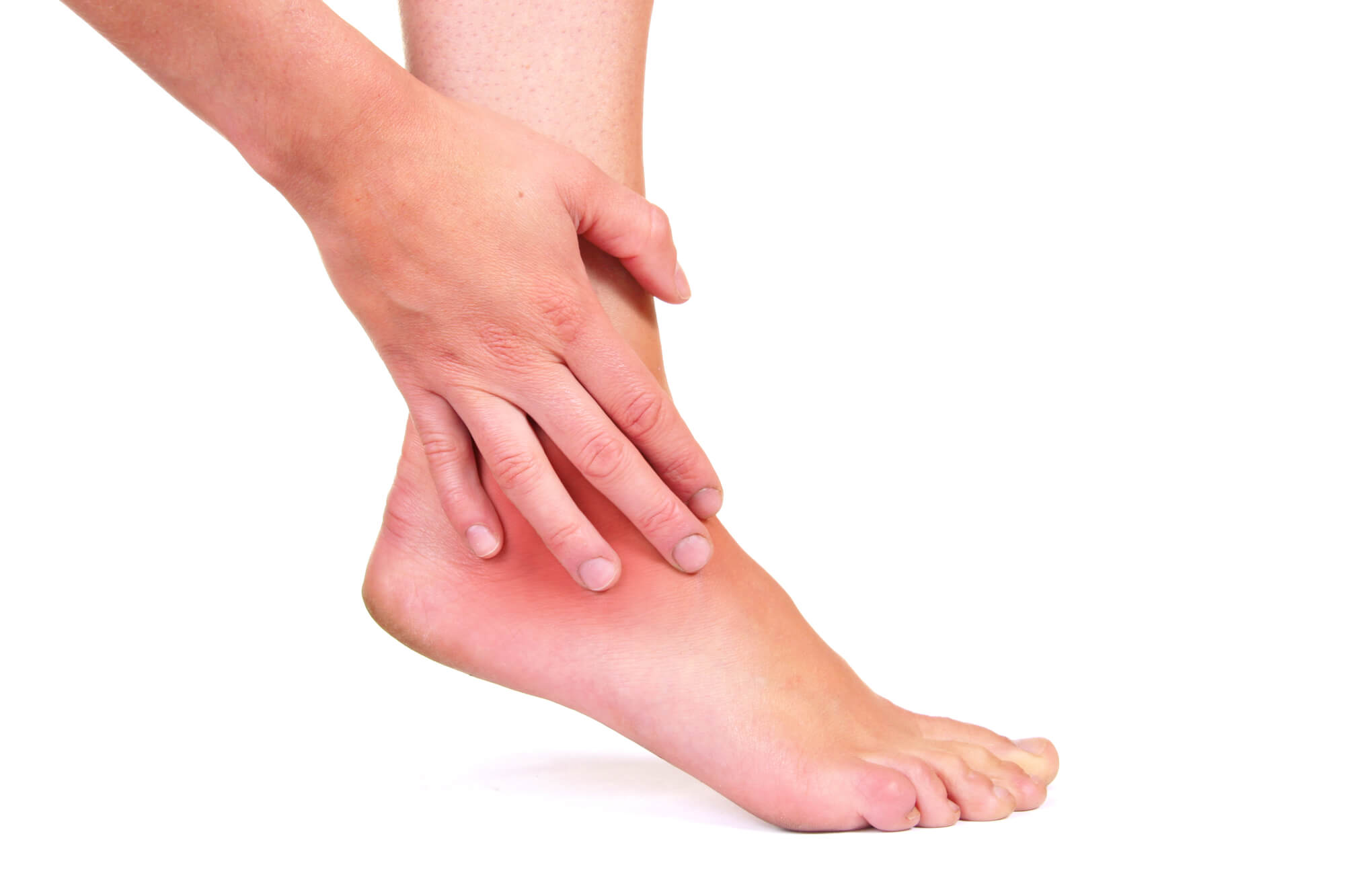
Arthritis
Arthritis is a condition that causes inflammation in the joints, including the joints in the feet and ankles. There are several types of arthritis, but the two most common types are osteoarthritis and rheumatoid arthritis. Osteoarthritis is caused by joint wear and tear, while rheumatoid arthritis is an autoimmune disorder that causes inflammation.
Symptoms of arthritis in the feet and ankles include pain, stiffness, and difficulty moving the affected joint. Treatment for arthritis may include medication to reduce inflammation and pain, physical therapy, and lifestyle changes such as losing weight and avoiding high-impact activities. In severe cases, surgery may be necessary to repair or replace the damaged joint.

Broken Bones
A broken bone, also known as a fracture, is a common foot and ankle injury that occurs when a bone is cracked or broken. Fractures can range from small cracks in the bone to complete breaks.
Various factors, including falls, accidents, and sports injuries, can cause fractures in the foot and ankle. They can also be caused by overuse or repetitive strain on the bone, such as in long-distance runners.
Treatment for a broken bone in the foot or ankle will depend on the severity of the fracture. In most cases, the bone will need to be immobilized with a cast or splint to allow it to heal. Physical therapy may also be recommended to help restore strength and mobility to the affected area. Surgery may be necessary in severe cases or if the bone has not healed properly.
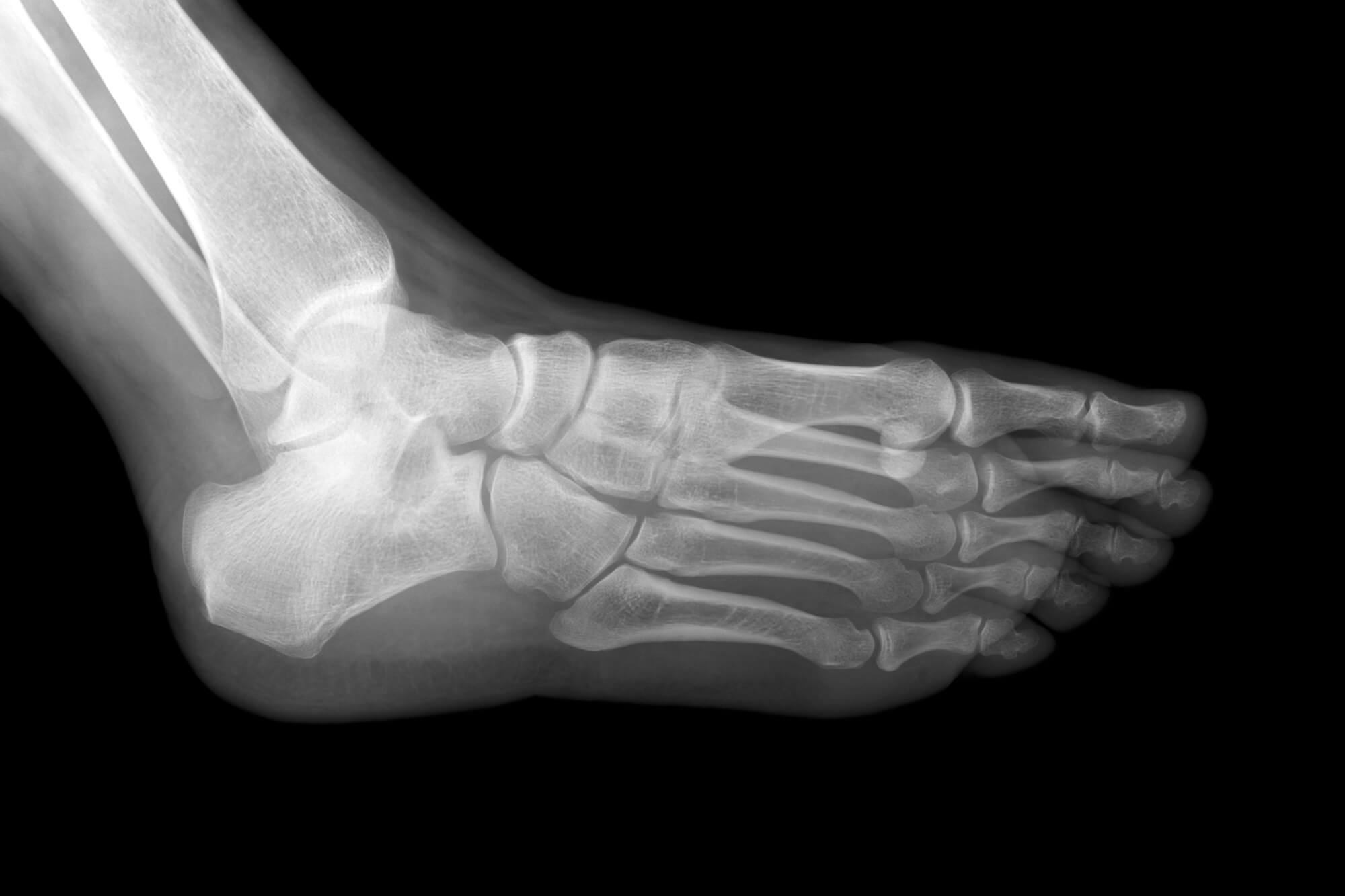
Bunions
A bunion is a big toe joint deformity that causes the toe to angle inward towards the other toes. This can cause the joint to become swollen and painful.
Bunions are often caused by genetics, but they can also be caused by wearing shoes that do not fit properly or put pressure on the toes. People with certain medical conditions, such as rheumatoid arthritis, are at a higher risk of developing bunions.
Treatment for bunions may include wearing shoes with a wider toe box to reduce pressure on the toes, using padding or inserts to help alleviate pain, and taking over-the-counter pain medication. In severe cases, surgery may be necessary to correct the deformity. To prevent bunions, it is important to wear shoes that fit properly and to avoid wearing high heels or shoes with a narrow toe box.

Childhood Gait Problems
Childhood gait problems refer to how a child walks or runs. Various factors, including structural abnormalities, muscle weakness or imbalances, and neurological conditions can cause these problems.
Symptoms of childhood gait problems may include difficulty walking or running, tripping or falling frequently, and pain in the feet or legs. Treatment for childhood gait problems will depend on the underlying cause and may include physical therapy, medication, and in some cases, surgery.
Diabetic Foot Collapse (Charcot Foot)
Diabetic foot collapse, also known as Charcot foot, is a condition that occurs in people with diabetes who have nerve damage in their feet. This can cause the bones in the foot to become weak and break easily, leading to deformities and an inability to walk.
Charcot foot is often caused by poor circulation and nerve damage in the feet, which can occur in people with uncontrolled diabetes. It can also be caused by trauma to the foot, such as a minor injury that goes unnoticed due to the loss of sensation in the affected area.
Treatment for Charcot foot may include immobilization of the affected foot, physical therapy, and medications to help manage diabetes and improve circulation. Surgery may be necessary in severe cases to repair or reconstruct the foot. To prevent Charcot foot, it is important for people with diabetes to properly control their blood sugar levels and to regularly check their feet for any signs of injury or infection.
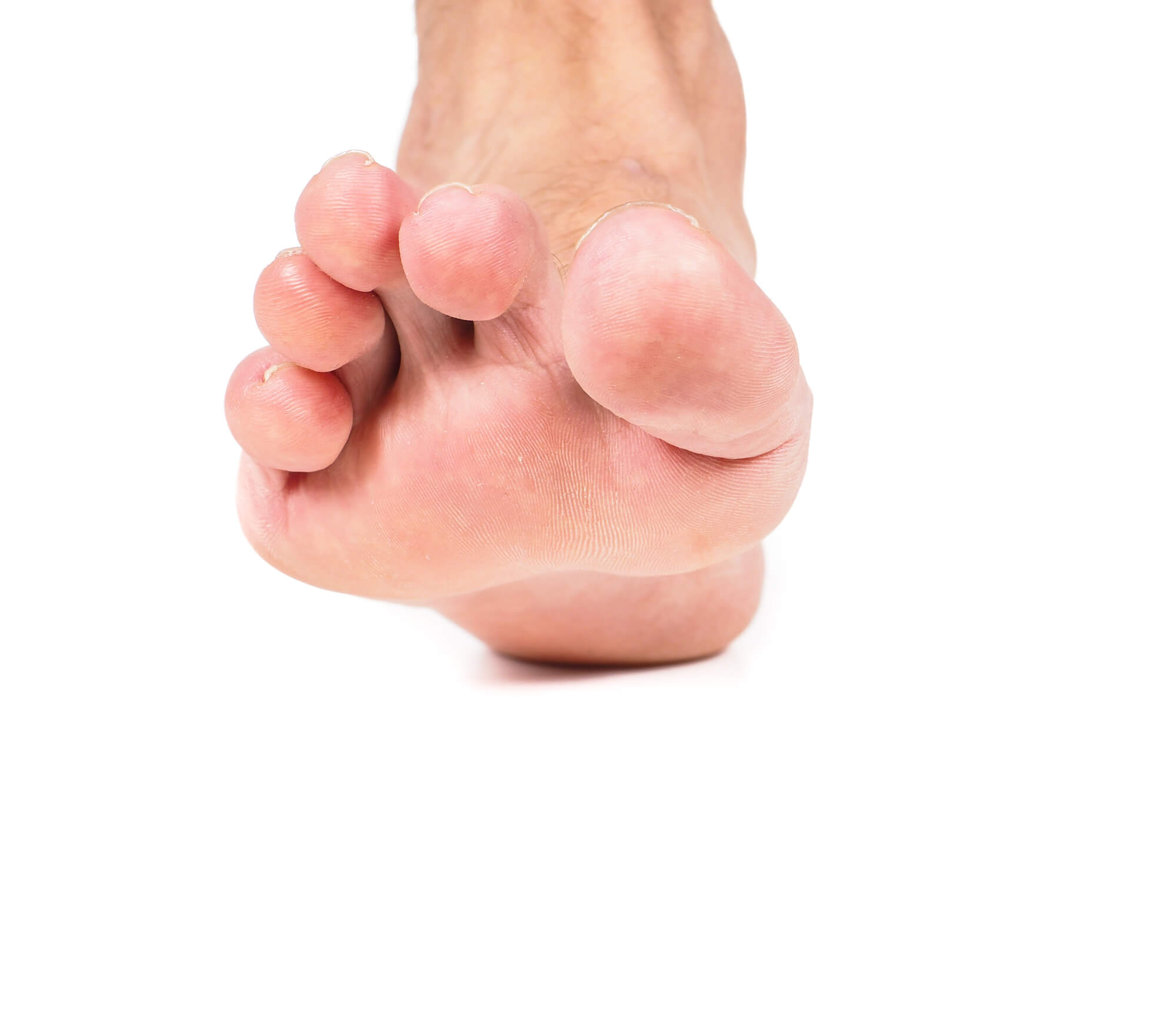
Diabetic Foot Ulcer
A diabetic foot ulcer is a painful sore that develops on the foot or ankle of a person with diabetes. These sores often slowly heal and can become infected if not properly treated.
A combination of factors, including poor circulation, nerve damage, and high blood sugar levels, cause diabetic foot ulcers. They can also be caused by wearing shoes that do not fit properly or not caring for the feet.
Treatment for a diabetic foot ulcer may include wound care, such as cleaning the wound and applying dressings and medications to help manage diabetes and improve circulation. Physical therapy may also help improve mobility and prevent future ulcers. In severe cases, surgery may be necessary to repair the damaged tissue or to remove infected or dead tissue. To prevent diabetic foot ulcers, people with diabetes need to control their blood sugar levels, wear shoes that fit properly, and regularly check their feet for any signs of injury or infection.
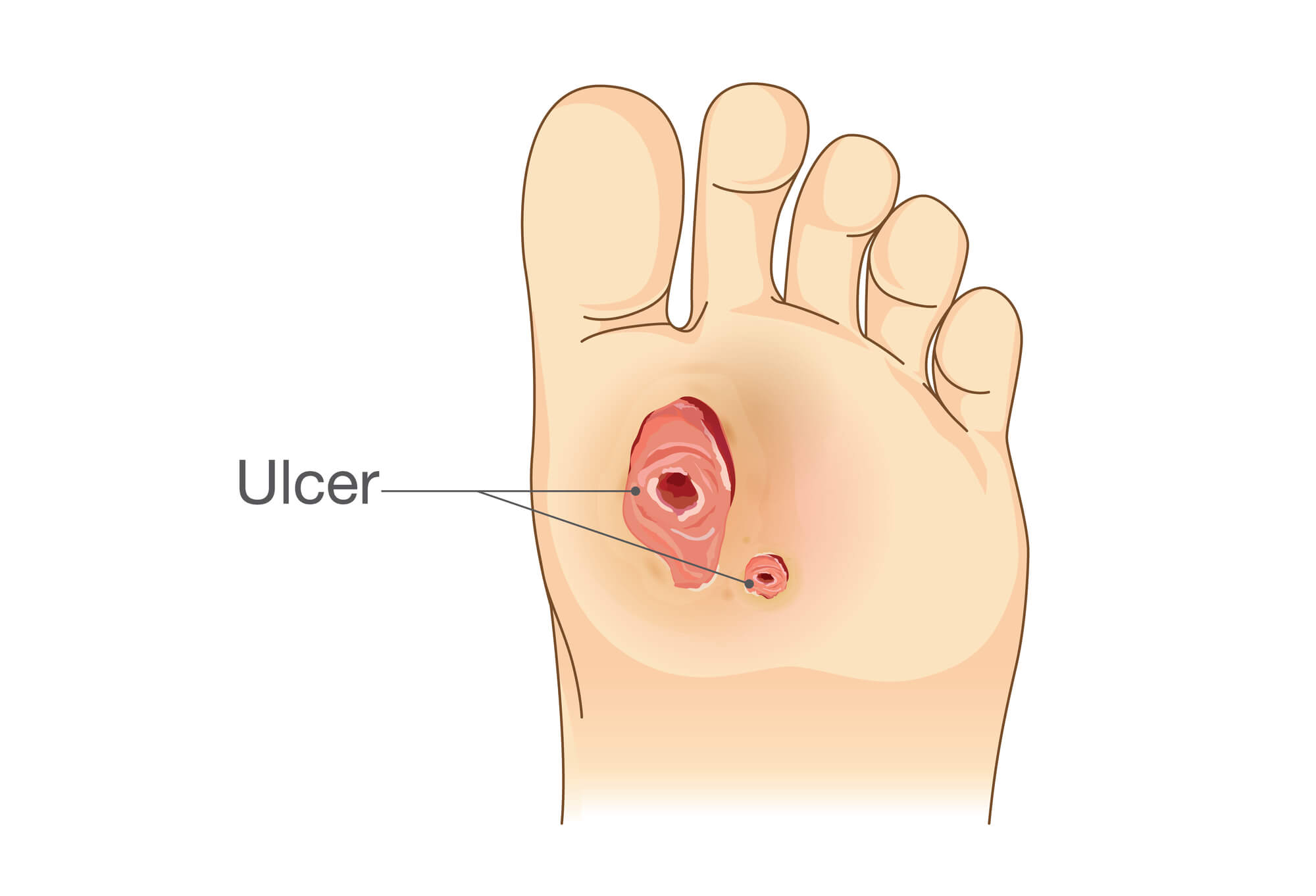
Flat Feet
Flat feet, also known as fallen arches, is a condition in which the arch of the foot collapses, causing the entire sole to come into contact with the ground. This can cause pain and discomfort in the feet and ankles and may affect a person's gait.
Flat feet can be caused by genetics, obesity, or certain medical conditions such as rheumatoid arthritis. They can also be a result of injury or overuse.
Treatment for flat feet may include stretching and strengthening exercises, physical therapy, and in some cases, orthotics (custom-made inserts for the shoes) to help support the arch. Surgery may be necessary in severe cases or if the flat feet are causing other problems such as pain or difficulty walking. To prevent flat feet, it is important to wear shoes that provide adequate arch support and to maintain a healthy weight.
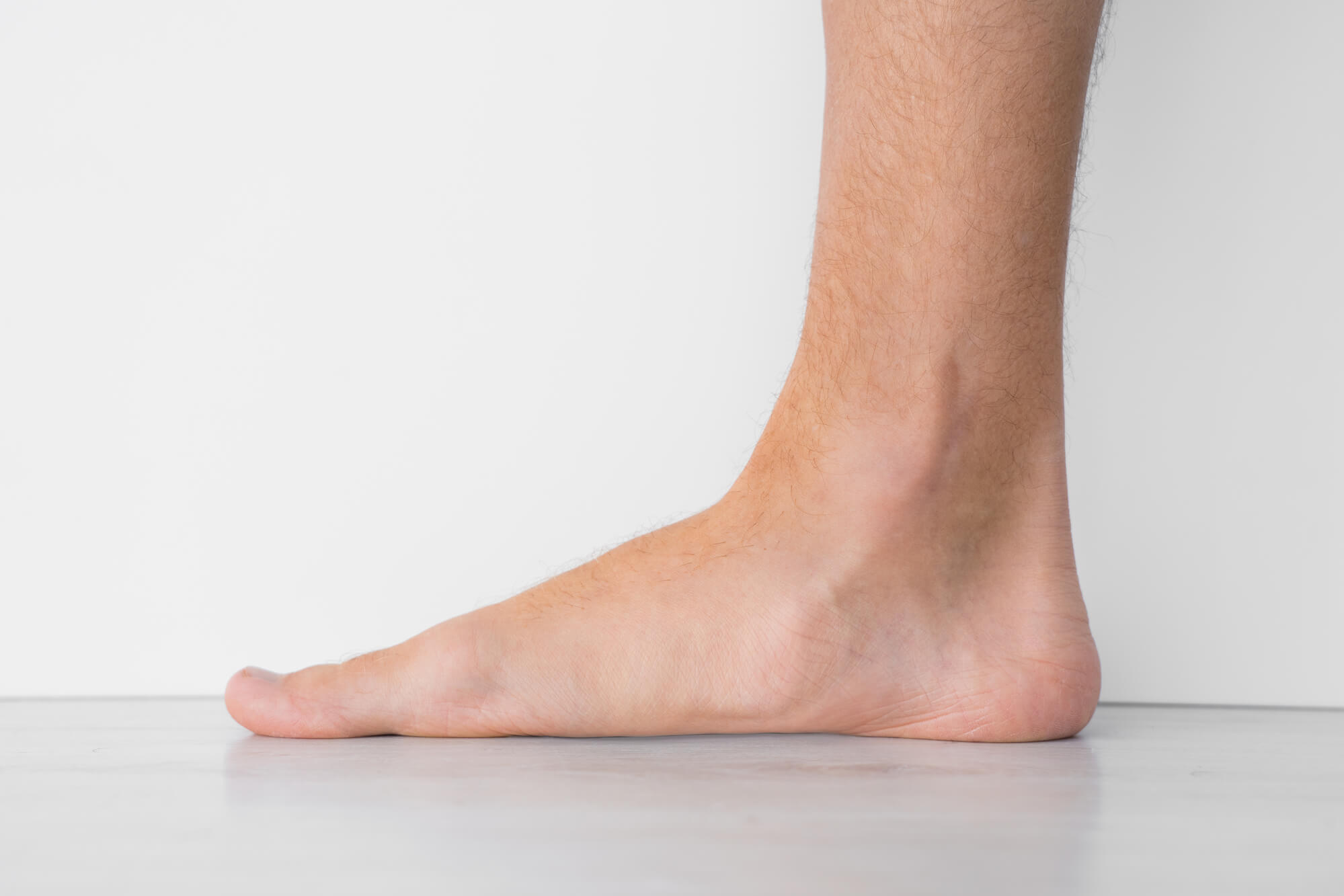
Fungal Toenail Infections
A fungal toenail infection, also known as onychomycosis, is a condition in which a fungus infects the nails of the toes. This can cause the nails to become thick, discolored, and brittle. Fungal toenail infections are more common in older adults and people with weakened immune systems.
Fungal toenail infections are often caused by wearing shoes that do not allow the feet to breathe, walking barefoot in damp public places such as pool decks or locker rooms, or sharing nail clippers or other personal grooming tools. They can also be caused by a fungal infection in the skin of the foot, such as athlete's foot.
Treatment for a fungal toenail infection may include antifungal medications, topical creams or ointments, and removal of the infected nail in severe cases. To prevent a fungal toenail infection, it is important to wear shoes that fit properly and allow the feet to breathe, to avoid walking barefoot in public places, and to clean and disinfect personal grooming tools properly.
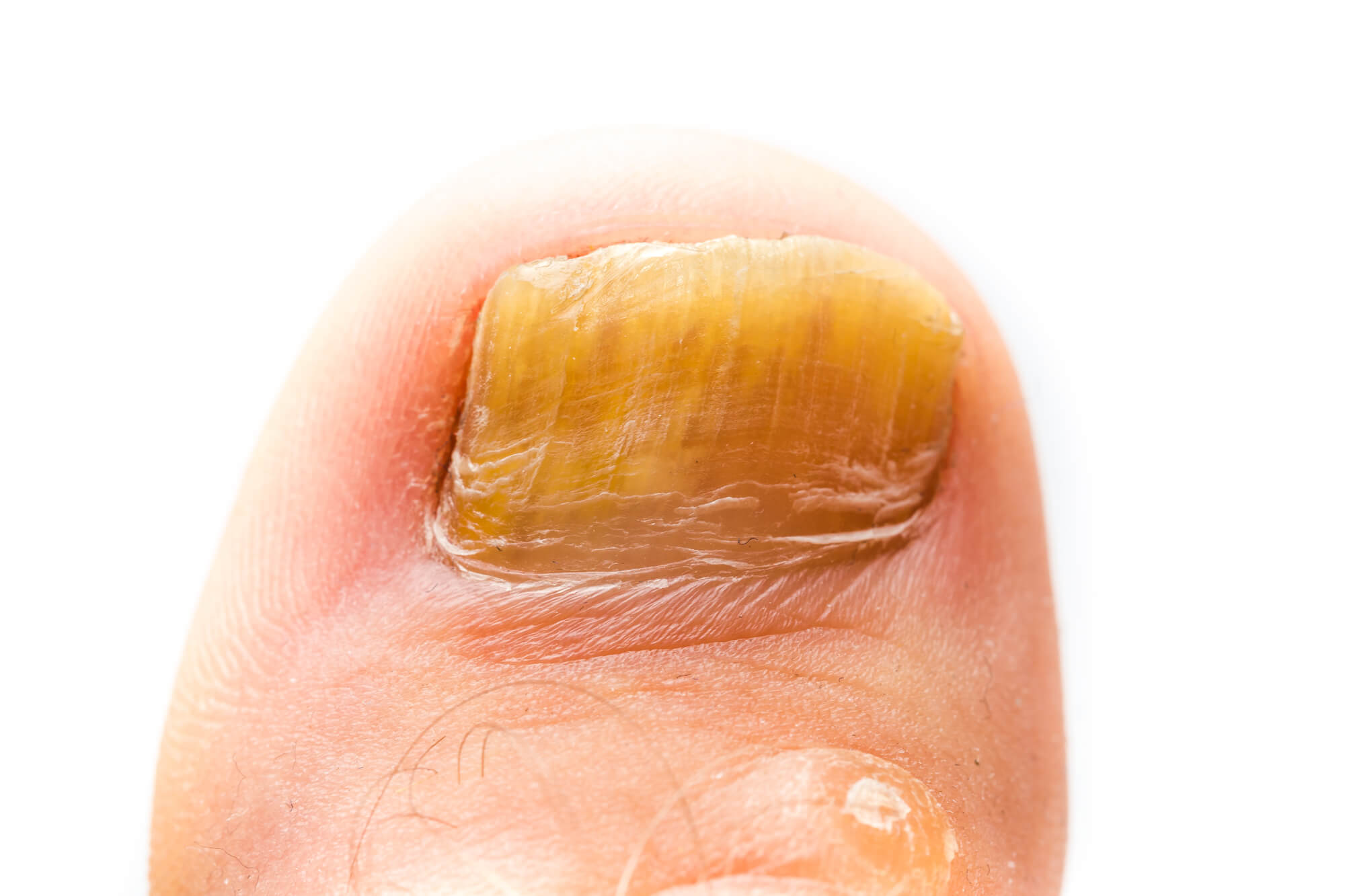
Gout
Gout is a type of arthritis that causes sudden and severe pain, swelling, and inflammation in the joints, particularly the joints in the feet and ankles. It is caused by an excess of uric acid in the blood, which can form crystals in the joints and cause inflammation.
Gout symptoms include sudden and severe pain in the affected joint, redness and swelling, and difficulty moving the joint. Treatment for gout may include medications to help reduce inflammation and pain, lifestyle changes such as losing weight and avoiding alcohol and high-purine foods, and surgery to remove the uric acid crystals in severe cases. To prevent gout, it is important to maintain a healthy diet and lifestyle and to control any underlying medical conditions that may increase the risk of developing gout.
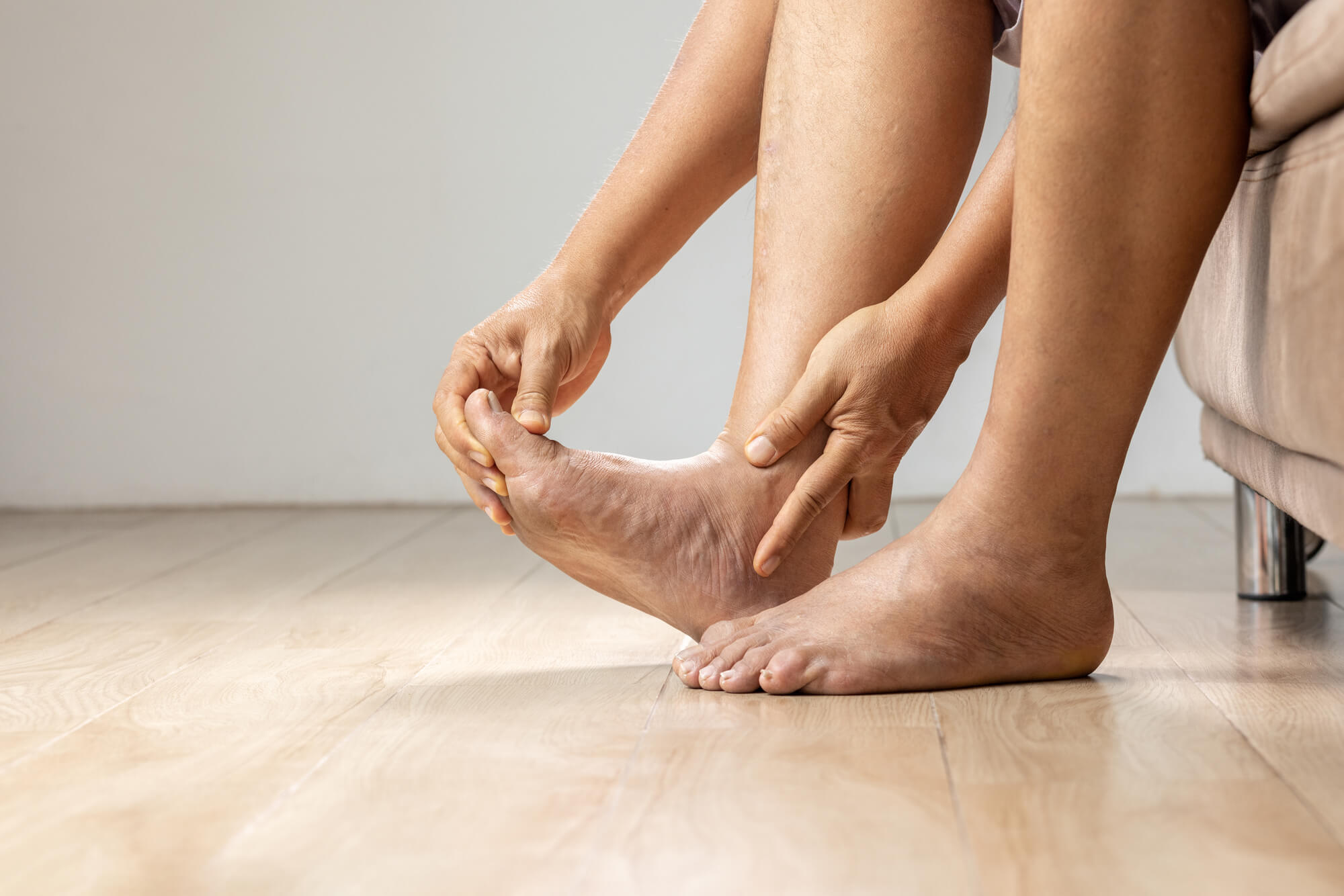
Hallux Limitus
Hallux limitus is a condition in which there is a limited range of motion in the big toe joint, also known as the first metatarsophalangeal joint. This can cause pain and difficulty walking or wearing certain types of shoes.
Hallux limitus is often caused by arthritis, previous injury to the joint, or a structural abnormality in the foot. It can also be caused by wearing shoes that do not provide proper support or put pressure on the toe joint.
Treatment for hallux limitus may include physical therapy to help improve the range of motion in the joint, medications to reduce inflammation and pain, and the use of orthotics to support the foot. In severe cases, surgery may be necessary to repair or reconstruct the joint. To prevent hallux limitus, it is important to wear shoes that fit properly and provide adequate support to the feet.
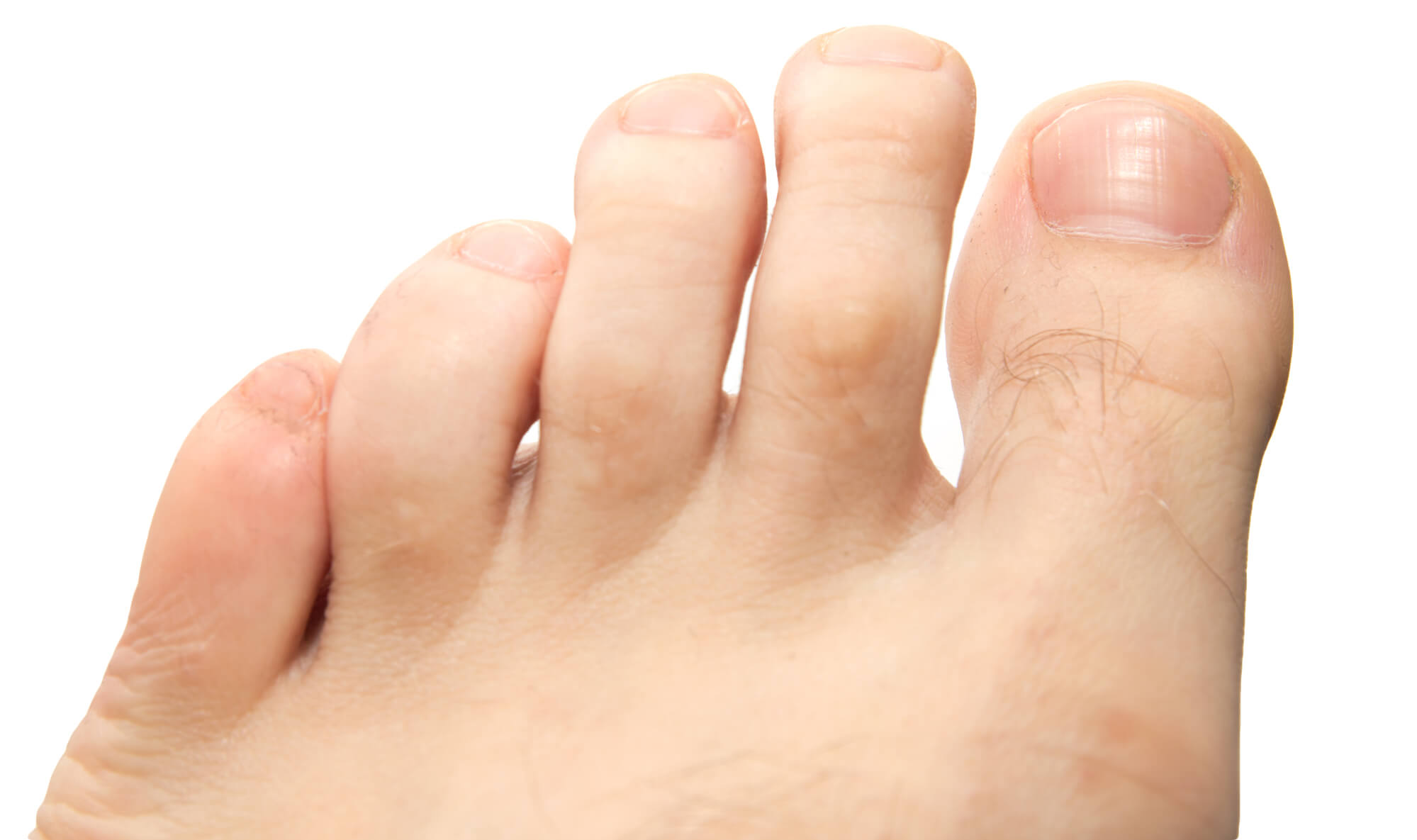
Hammertoes
A hammertoe is a deformity of the toes in which the toe's middle joint becomes bent, causing the toe to resemble a hammer. This can cause pain and difficulty wearing certain types of shoes.
Hammertoes can be caused by genetics, but they can also be caused by wearing shoes that do not fit properly or by certain medical conditions such as rheumatoid arthritis.
Treatment for hammertoes may include wearing shoes with a wider toe box to reduce pressure on the toes, using padding or inserts to help alleviate pain, and performing exercises to stretch and strengthen the muscles in the toes. In severe cases, surgery may be necessary to correct the deformity. To prevent hammertoes, it is important to wear shoes that fit properly and to avoid wearing high heels or shoes with a narrow toe box.
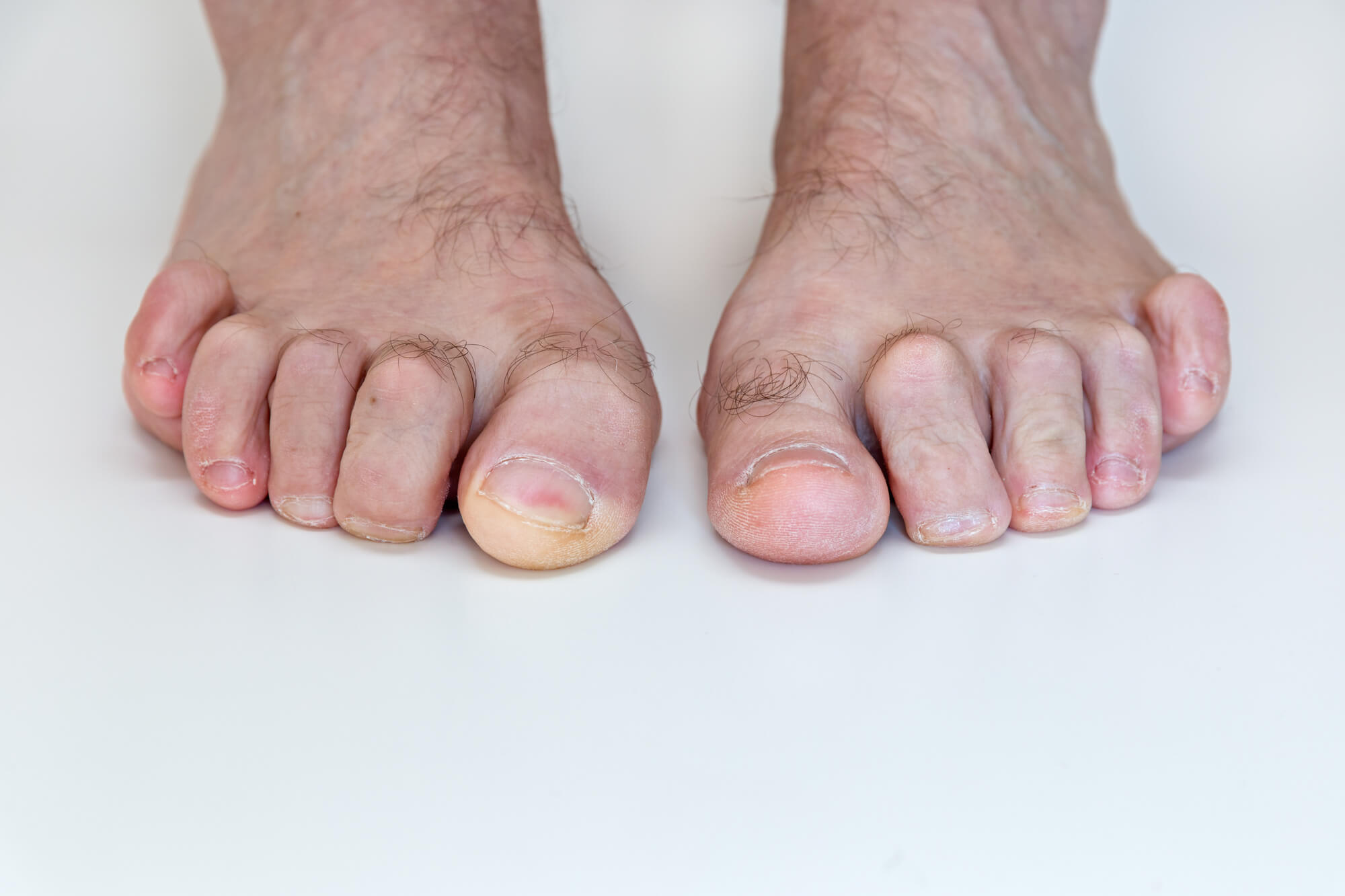
Heel Pain
Heel pain is a common foot and ankle condition that can cause discomfort and difficulty walking. It can be caused by various factors, including plantar fasciitis (inflammation of the connective tissue in the sole), heel spurs (bony growths on the heel bone), and overuse or injury.
Treatment for heel pain may include rest, ice, and over-the-counter pain medication. Physical therapy may also be recommended to help stretch and strengthen the muscles and connective tissue in the foot. In some cases, a corticosteroid injection or surgery may be necessary to address the underlying cause of the heel pain. To prevent heel pain, it is important to wear shoes that fit properly, provide adequate support to the feet, and gradually increase the intensity and duration of physical activity.
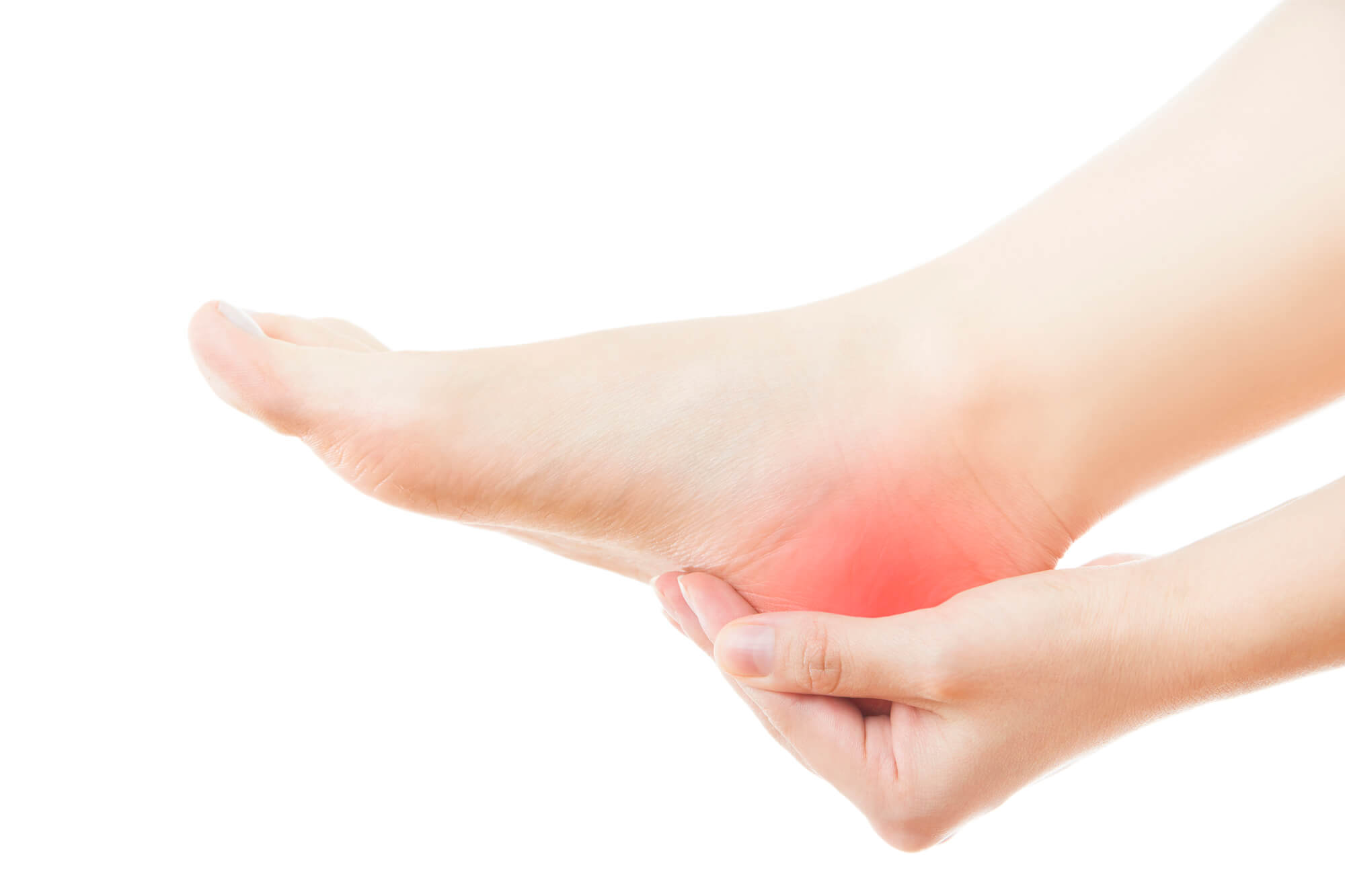
Ingrown Toenails
An ingrown toenail is a condition in which the edge of the toenail grows into the skin, causing pain and swelling. It can be caused by wearing shoes that do not fit properly, cutting the toenails too short, or not properly caring for the feet.
Treatment for an ingrown toenail may include soaking the affected foot in warm water and applying an antibiotic ointment to help prevent infection. In severe cases, surgery may be necessary to remove the ingrown portion of the toenail. To prevent ingrown toenails, it is important to wear shoes that fit properly, to cut the toenails straight across, and to care for the feet properly.
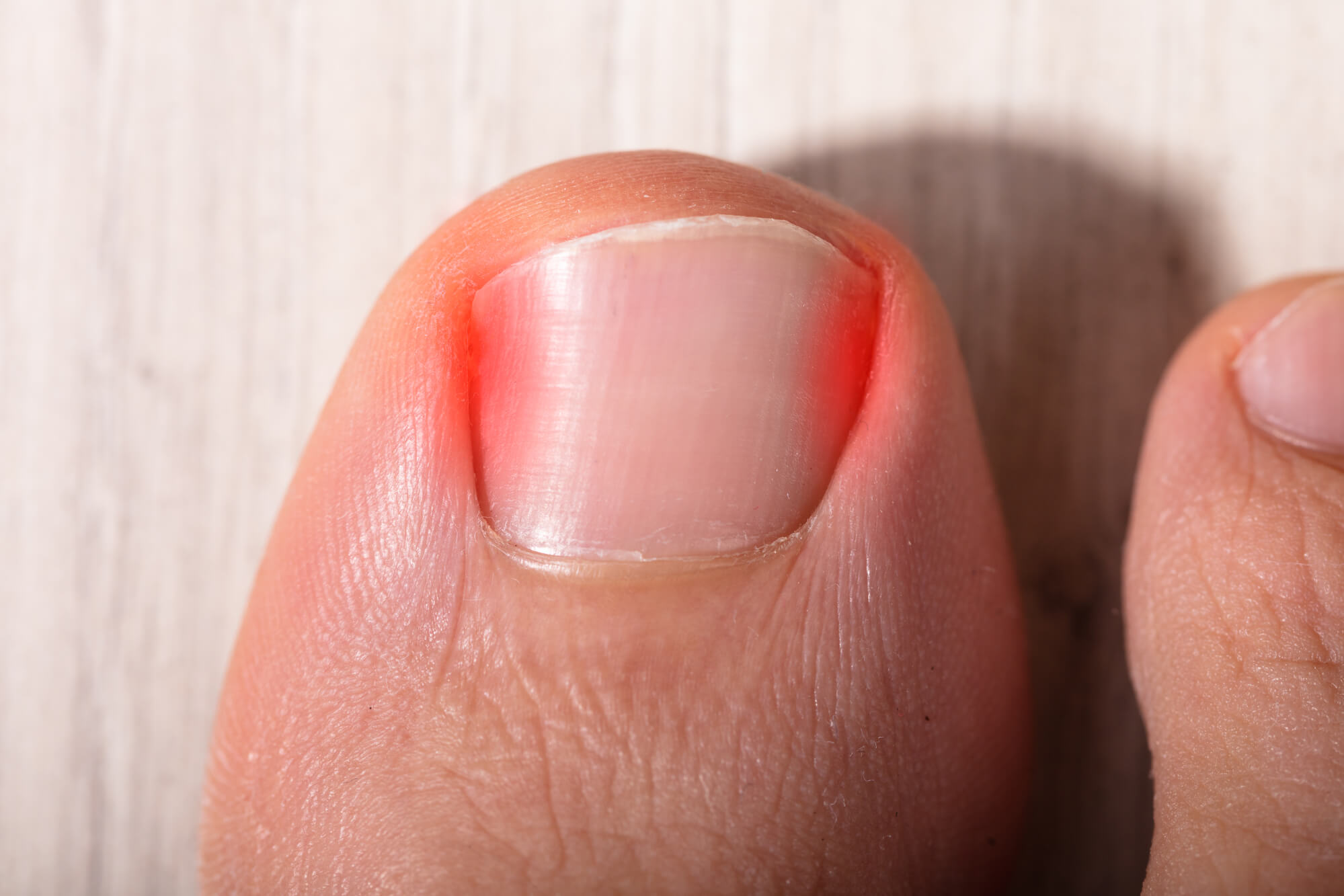
Metatarsalgia (Ball of Foot Pain)
Metatarsalgia, also known as ball of foot pain, is a condition that causes pain and discomfort in the ball of the foot, typically in the area just behind the toes. It can be caused by wearing shoes that do not fit properly, participating in high-impact activities, or having certain foot deformities such as flat feet or a high arch.
Symptoms of metatarsalgia may include pain in the ball of the foot, particularly when walking or standing, swelling in the affected area, and a burning sensation. Treatment for metatarsalgia may include wearing shoes with a wider toe box to reduce pressure on the toes, using inserts or padding to help alleviate pain, and performing stretches and exercises to strengthen the muscles in the foot. Surgery may be necessary in severe cases to address any underlying foot deformities or remove any damaged or infected tissue. To prevent metatarsalgia, it is important to wear shoes that fit properly, provide adequate support to the feet, and gradually increase the intensity and duration of physical activity.
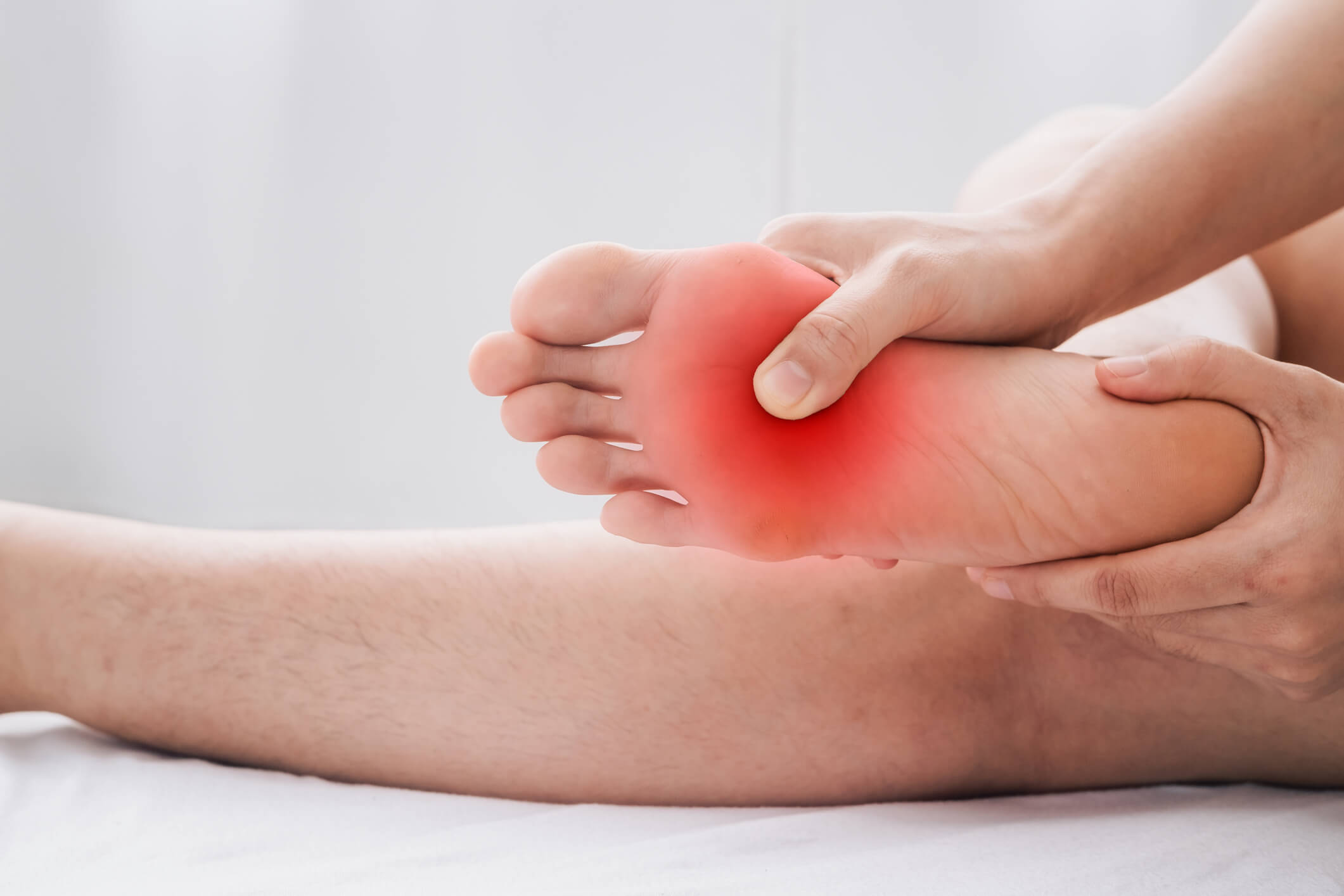
Neuromas
A neuroma is a benign growth of nerve tissue that occurs in the foot, typically between the third and fourth toes. It can cause pain, numbness, and tingling in the affected area.
Neuromas are often caused by shoes that do not fit properly or put pressure on the toes. They can also be caused by certain foot deformities or by injury to the foot.
Treatment for a neuroma may include wearing shoes with a wider toe box to reduce pressure on the toes, using inserts or padding to help alleviate pain, and taking over-the-counter pain medication. In severe cases, surgery may be necessary to remove the neuroma or to repair any underlying foot deformities. To prevent a neuroma, it is important to wear shoes that fit properly and provide adequate support to the feet.
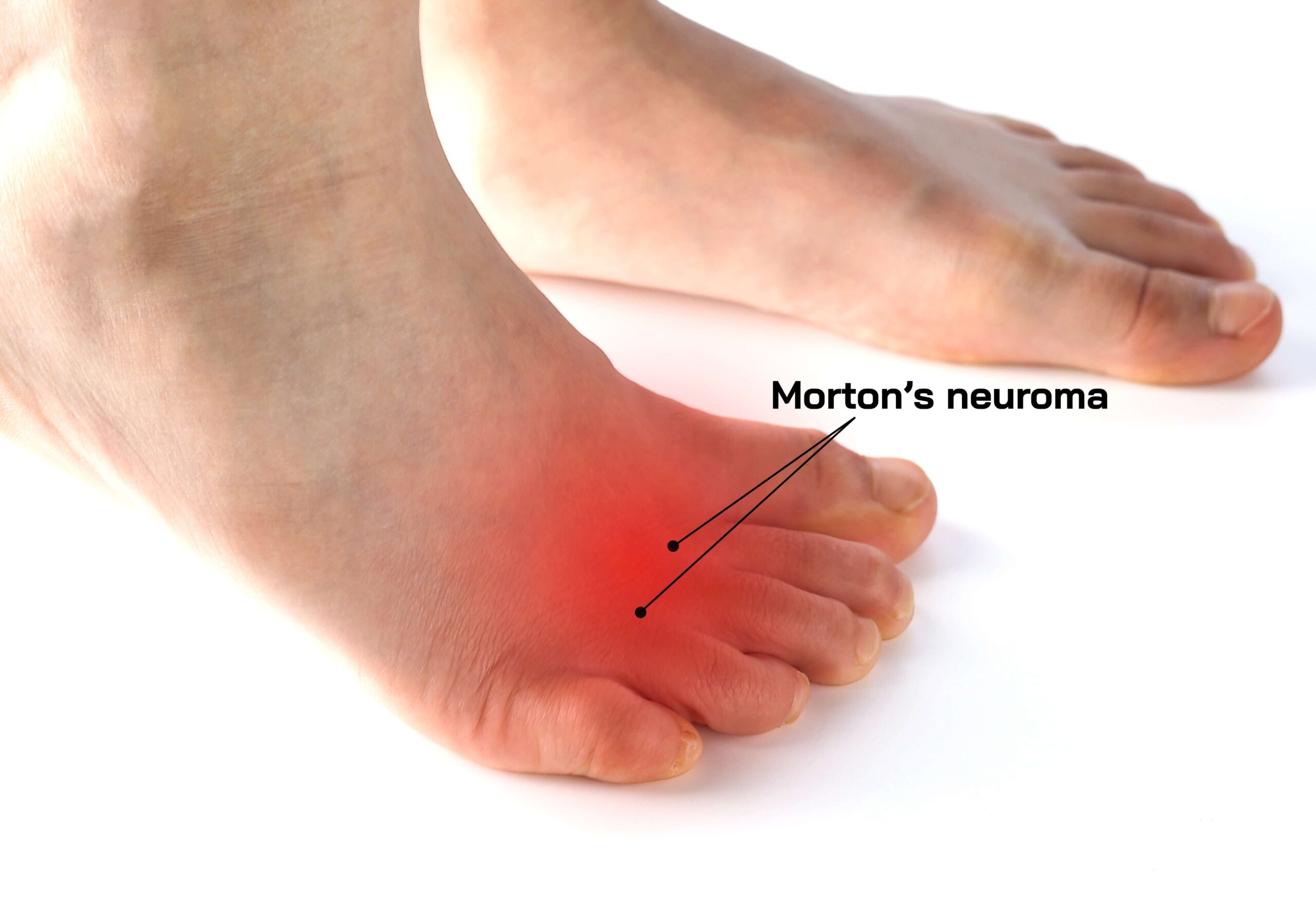
Peripheral Artery Disease/Poor Circulation
Peripheral artery disease (PAD) is when the arteries that carry blood to the limbs become narrow or blocked, reducing blood flow to the feet and ankles. This can cause various symptoms, including pain, numbness, and tingling in the affected area. Poor circulation can also cause these symptoms and is often a result of PAD.
PAD is often caused by a buildup of plaque in the arteries resulting from smoking, high blood pressure, high cholesterol, or diabetes. Certain medical conditions, such as atherosclerosis can also cause it.
Treatment for PAD and poor circulation may include medications to help manage underlying medical conditions and improve blood flow, lifestyle changes such as quitting smoking and eating a healthy diet, and surgery to remove the plaque from the arteries in severe cases. To prevent PAD and poor circulation, it is important to manage any underlying medical conditions, maintain a healthy lifestyle, and get regular check-ups to monitor the health of the arteries.

Peripheral Neuropathy
Peripheral neuropathy is when the nerves in the feet and ankles become damaged, causing numbness, tingling, and pain. Various factors, including diabetes, certain medications, and alcohol abuse, can cause it.
Treatment for peripheral neuropathy may include medications to help manage the underlying cause of the neuropathy and to alleviate symptoms, physical therapy to help improve mobility and function and lifestyle changes such as quitting smoking and eating a healthy diet. In severe cases, surgery may be necessary to repair or replace damaged nerves. To prevent peripheral neuropathy, it is important to manage any underlying medical conditions properly and to avoid habits such as smoking and excessive alcohol consumption.
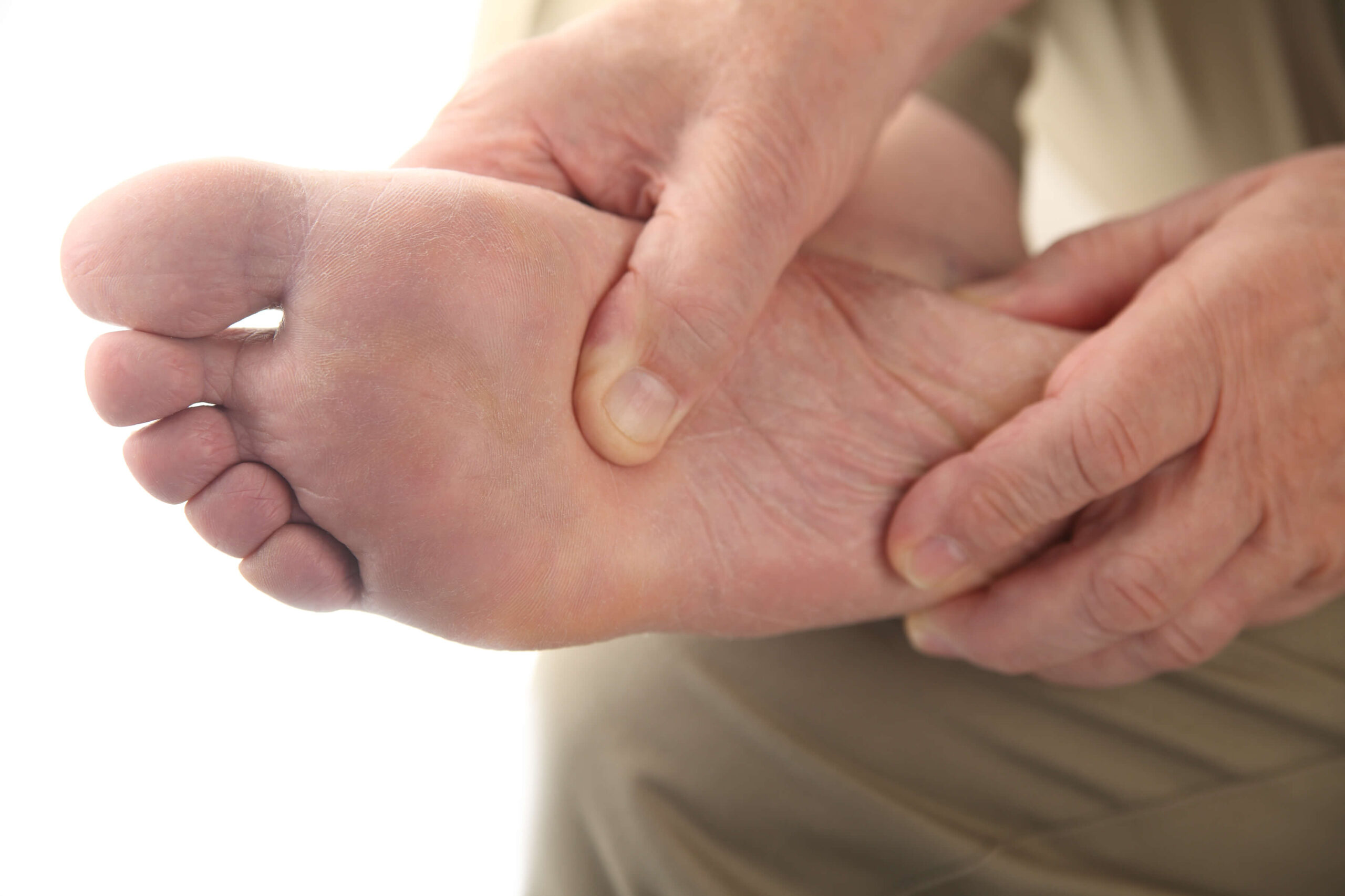
Plantar Fasciitis
Plantar fasciitis is a common foot and ankle condition that causes inflammation in the connective tissue in the sole, known as the plantar fascia. This can cause pain and discomfort, particularly when walking or standing.
Plantar fasciitis is often caused by overuse or strain on the plantar fascia, such as from standing or walking for long periods or wearing shoes that do not provide adequate support. Certain foot deformities, high arch, or flat feet can cause it.
Treatment for plantar fasciitis may include rest, ice, and over-the-counter pain medication to reduce inflammation and pain. Stretching and strengthening exercises may also be recommended to help improve the flexibility and strength of the plantar fascia. In severe cases, a corticosteroid injection or surgery may be necessary to address the underlying cause of the plantar fasciitis. To prevent plantar fasciitis, it is important to wear shoes that fit properly, provide adequate support to the feet, and gradually increase the intensity and duration of physical activity.

Plantar Warts
Plantar warts are growths on the feet' skin caused by a viral infection. They can be painful and may make it difficult to walk.
Plantar warts are often caused by walking barefoot in damp public places, such as pool decks or locker rooms, or by sharing nail clippers or other personal grooming tools. They can also be caused by a weakened immune system.
Treatment for plantar warts may include over-the-counter medications or topical creams to help kill the virus and remove the wart or cryotherapy (freezing the wart with liquid nitrogen). In severe cases, surgery may be necessary to remove the wart. To prevent plantar warts, it is important to wear shoes in public places, clean and disinfect personal grooming tools properly, and practice good hygiene.
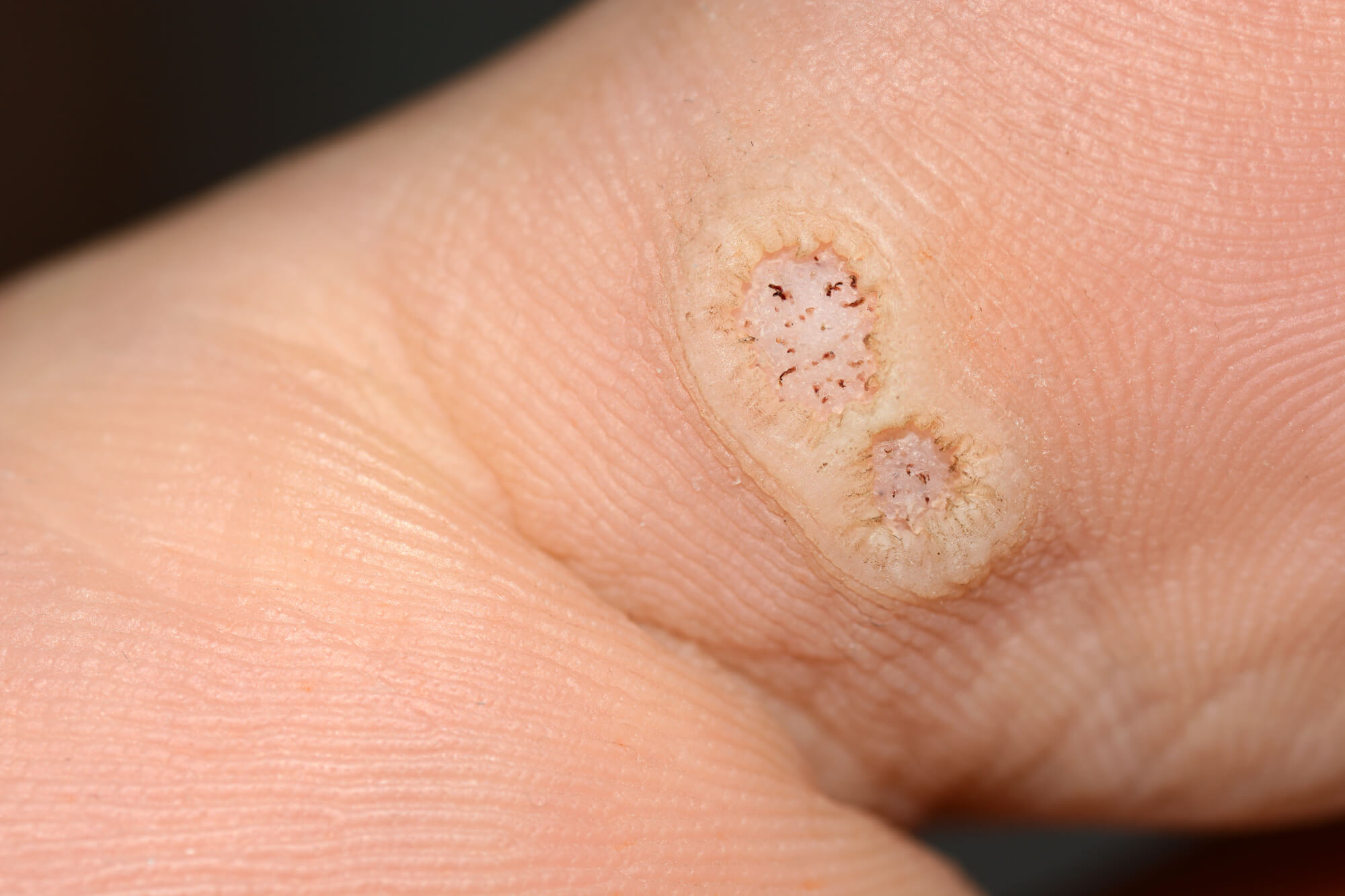
Severe Athlete's Foot
Severe athlete's foot is a fungal infection of the skin on the foot that causes redness, itching, and scaling of the skin. It can be caused by wearing shoes that do not allow the feet to breathe, walking barefoot in damp public places, or sharing nail clippers or other personal grooming tools.
Treatment for severe athlete's foot may include antifungal medications, topical creams or ointments, and in severe cases, removal of the infected skin. To prevent severe athlete's foot, it is important to wear shoes that fit properly and allow the feet to breathe, to avoid walking barefoot in public places, and to clean and disinfect personal grooming tools properly.
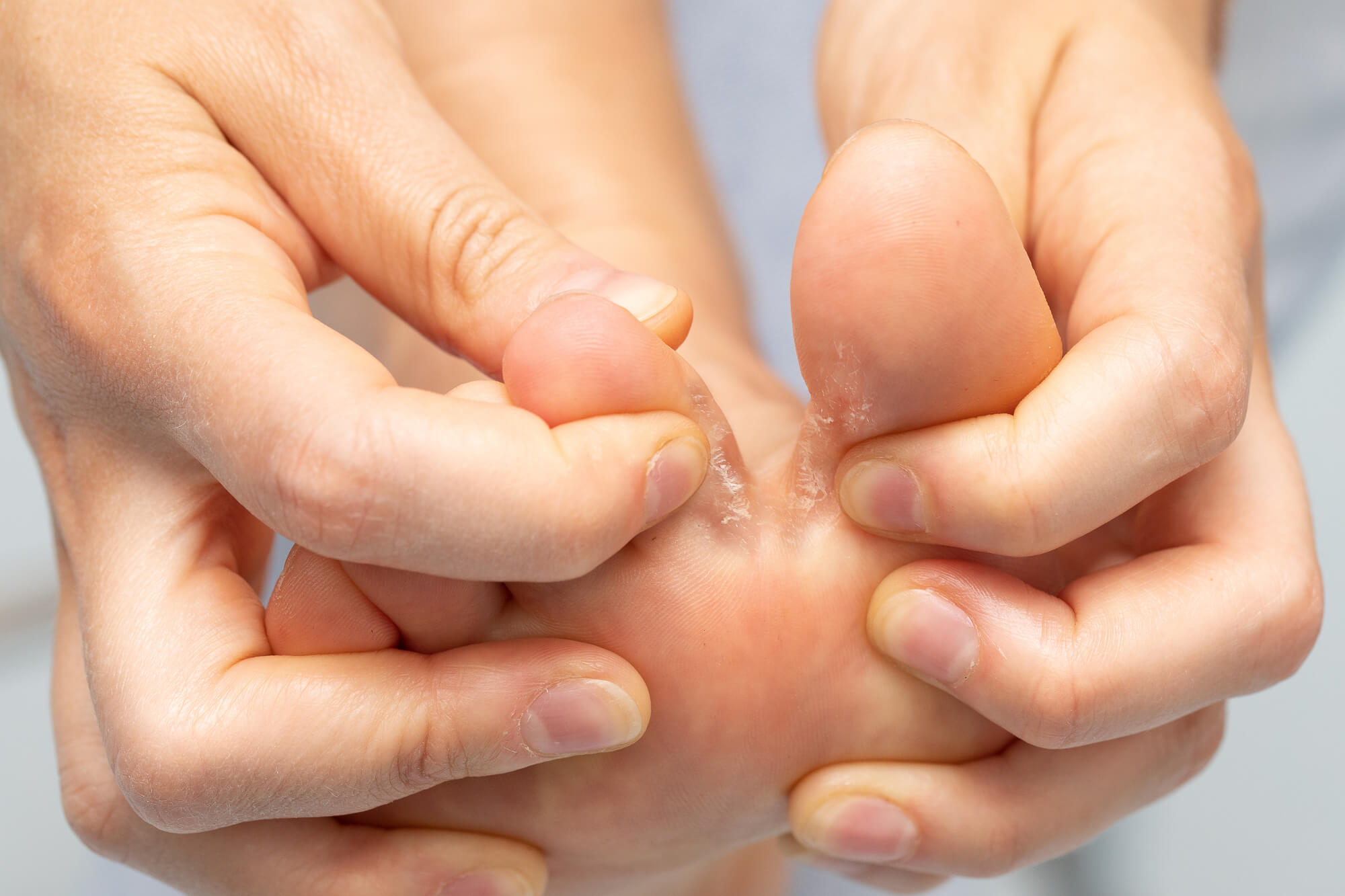
Sever's Disease (Children's Heel Pain)
Sever's disease, also known as calcaneal apophysitis, is a common foot and ankle condition that affects children and adolescents. It causes pain and discomfort in the heels, particularly when walking or standing.
Sever's disease is caused by the repetitive stress and strain on the growth plate in the heel bone during periods of rapid growth. It is more common in children who are active in sports or have flat feet or a high arch.
Treatment for Sever's disease may include rest, ice, and over-the-counter pain medication to reduce inflammation and pain. Stretching and strengthening exercises may also be recommended to help improve the flexibility and strength of the muscles and tendons in the feet. In severe cases, a cast or special shoe inserts may be necessary to help alleviate pressure on the heels. To prevent Sever's disease, it is important to wear shoes that fit properly, provide adequate support to the feet, and gradually increase the intensity and duration of physical activity.

Shin Splints
Shin splints, also known as medial tibial stress syndrome, is a common foot and ankle condition that causes pain and discomfort along the front of the shin. It is often caused by overuse or repetitive strain on the muscles and tendons in the lower leg, such as running or participating in high-impact sports. It can also be caused by wearing shoes that do not provide adequate support or having flat feet or a high arch.
Treating shin splints may include rest, ice, and over-the-counter pain medication to reduce inflammation and pain. Stretching and strengthening exercises may also be recommended to help improve the flexibility and strength of the muscles and tendons in the lower leg. In severe cases, a corticosteroid injection or surgery may be necessary to address any underlying foot deformities or to remove damaged tissue. To prevent shin splints, it is important to wear shoes that fit properly, provide adequate support to the feet, and gradually increase the intensity and duration of physical activity.

Stress Fractures
A stress fracture is a small crack or break in a bone caused by repetitive stress or overuse. They are common in the feet and ankles, particularly in athletes who participate in high-impact sports or have sudden increases in training intensity or duration.
Symptoms of a stress fracture may include pain and tenderness in the affected area, swelling, and difficulty walking or bearing weight on the affected limb. Treatment for a stress fracture may include rest, ice, and over-the-counter pain medication to reduce inflammation and pain. A cast or surgery may be necessary in severe cases to allow the bone to heal properly. To prevent stress fractures, it is important to gradually increase the intensity and duration of physical activity, wear shoes that fit properly and provide adequate support to the feet.
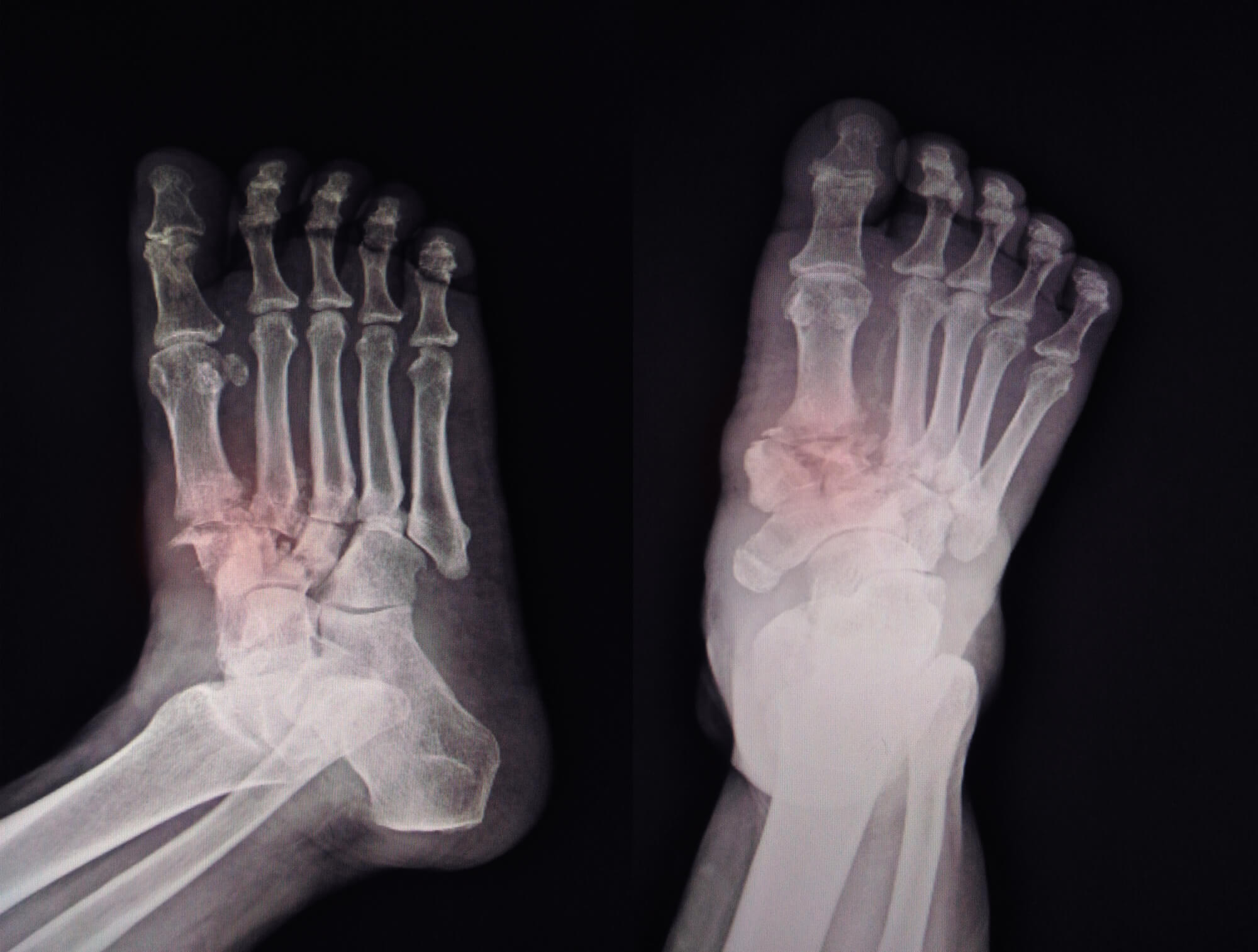
Conclusion
Foot and ankle conditions can cause a range of symptoms and can significantly impact a person's quality of life. It is important to seek treatment from a podiatrist or other healthcare professional to help address the underlying cause of the condition and to alleviate symptoms. To prevent foot and ankle conditions, it is important to wear shoes that fit properly and provide adequate support to the feet, maintain a healthy lifestyle, and gradually increase the intensity and duration of physical activity.

